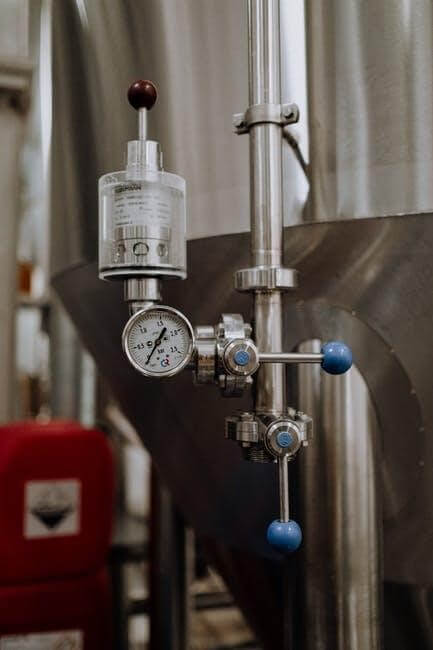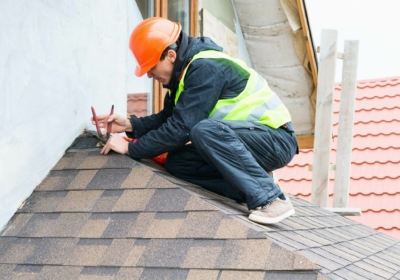One thing many homeowners whose water comes from a well resent is having a perfectly warm shower interrupted by a flushing toilet that sends a jolt of scalding water out of the showerhead.
This happens because the use of cold water in the toilet reduces the pressure on the cold water line to the point that it’s lower than the pressure on the hot water line. This causes more hot water to stream out of your shower.
To eliminate this problem, one of the most effective solutions is to install a bladder pressure tank. In this article, you’ll learn what is a bladder pressure tank and what are the pros and cons of using one.
Types of Pressure Tanks
A well pressure tank is a reservoir that stores water before it is distributed throughout the home. Pressure tanks connect to the well pump. The well pump is what delivers the water to the plumbing fixtures.
Well tanks are pressurized by means of compressed air. Compressed air controls the water pressure. It also lets the pump know when the water level gets low and needs refilling.
There are three different types of well pressure tanks. Each has its own unique mechanism for controlling water pressure. The three types of well pressure tanks include air-over-water, diaphragm, and bladder pressure tanks.
An air-over-water pressure tank utilizes a single chamber containing both water and pressurized air. This single-chamber design makes air-over-water pressure tanks prone to becoming water-logged.
Conversely, diaphragm and bladder pressure tanks each have two separate chambers. One chamber contains compressed air and the other contains water.
What is the difference between a diaphragm vs bladder pressure tank? A bladder tank has a vinyl tank inside of it. A diaphragm tank has a rubber diaphragm, butyl tank, or vinyl tank mounted on it.
Bladder tanks and diaphragm tanks serve the same function. But, a bladder tank is able to be replaced. A diaphragm is attached to the tank and cannot be replaced.
How Does a Bladder Pressure Tank Work?
Inside a bladder pressure tank, a balloon fills with water when the pressure outside the bladder becomes greater than the pressure inside the bladder.
A check valve prevents the backflow of water. It also acts as a reserve for water and pressure.
The unique design of a bladder pressure tank allows the bladder to act as a pump, which is why so many homeowners with wells are interested in this service.
A bladder pressure tank works without a well pump. The bladder pressure tank is itself a pump that runs without power. A bladder pressure tank can help avoid well pump problems.
Bladder pressure tanks last a long time and you can replace them easily when required.
Some Of The Troubleshooting Guide About Bladder Pressure Tank That People Should Know
If you are using a bladder pressure tank in your own house or apartment then there are few facts about this tank that you will have to keep in your mind. The very moment you will see these particular points you will have to check your bladder pressure tank immediately. It is a sign of troubleshooting that your bladder pressure tank is going through. It is necessary to check all the things which we will discuss in the below section and we’ll have to solve those things as soon as possible. To avoid unnecessary damage to the bladder pressure tank one should keep the points in his or her mind. Let us discuss the troubleshooting points here shortly.
Disconnect Electrical Power To The Pump
There are so many times that you can face the disconnection of electrical power to the pump. If the electrical power does not connect well with your tank properly then it will now work systematically and gradually. Moreover, I cannot load the water in the tank as there is no electrical connection with your pump and tank as well. Hence while loading water in the tank you will have to check the connection between the electrical powers of the pump and tank as well.
Check The Tank’s Pressure
To avoid unnecessary Troubles one needs to check the tank’s pressure from time to time. If the pressure is quite high then it is not good for the bladder pressure tank of your own house or apartment as well. You need to adjust the tank’s pressure so that it does not bring any kind of other Troubles as well.
Add Air
Besides that, you will have to add air in your bladder pressure tank if the level is below 2 psi. Sometimes the low air in the tank cannot hold water smoothly or it might Cause different types of other troubles as well.
Release Air
However, you will have to release air if you see the air level is above 2 psi. One will have to balance the air of the bladder pressure tank.
Check For Leaks
Another important point about the bladder pressure tank is about the leakage. It is mandatory to check whether the tank has or not unnecessary leaks in the tank or not. If there are no leaks then it is okay otherwise if you see any leaks within the tank then you will have to fix it as soon as possible.
Pros and Cons of a Bladder Pressure Tank
The con of using a bladder pressure tank is that they have a relatively small storage capacity. They are intended to work in combination with your primary well pressure tank.
One pro of using a bladder pressure tank is that it doesn’t require a pump. It also controls pressure very effectively and prevents low-pressure damage to your well and plumbing fixtures.
If you enjoyed this article, check out what else we have in store for you in our Lifestyle and Home Improvement departments.







Recent Comments